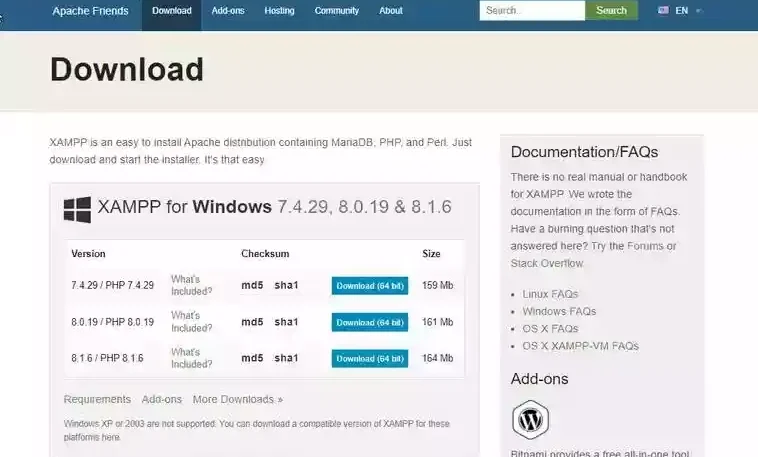XAMPP is the most popular software program package that’s used to set up a PHP development environment for internet services via presenting all the required software program additives. During the method of software program deployment, most of the net servers use almost similar components, so the use of XAMPP provides an easy transition from a nearby server to a live server. XAMPP is an AMP stack that stands for Cross-platform, Apache, MySQL, PHP, Perl with a few additional administrative software equipment including PHPMyAdmin (for database get right of entry to), FileZilla FTP server, Mercury mail server, and JSP Tomcat server. Other usually recognized software program packages like XAMPP are WAMP, LAMP, and others.
The XAMPP server is used to test PHP pages. It works as a neighborhood server. It includes a MySQL database to manage or save facts on a local server. Also install XAMPP on ubuntu/Linux is easy, Read this article before do it.
It’s always an awesome exercise to test your website at the local server earlier than you virtually put up it on the actual server. And to create a neighborhood server surrounding your windows machine, you may use XAMPP. XAMPP stands for
X– pass-platform,
A– Apache,
M– MySQL,
P– PHP,
P– Perl.
It is a very loose and open-source answer that offers you a super local net server to work on. By installing XAMPP units you unfastened from studying and remembering instructions to run Apache, MySQL, and many others. It virtually gives you a control panel to manipulate all of the inclusive additives.
Once you’ve got XAMPP set up for your PC you may install any CMS, consisting of but now not confined to WordPress to your Local PC. Since we have already mentioned a way to circulate WordPress from localhost to live server so, you mustn’t worry approximately the later technique after putting in WordPress domestically. Simply take a look at your website online thoroughly on XAMPP and make the most of it.
Advantages of XAMPP:
- It is free and smooth to apply and easily available for Windows, Linux, and Mac OS.
- It is a beginner’s friendly solution bundle for complete stack web improvement.
- It is an open-source software program package that gives a clean setup enjoy.
- It is quite simple and lightweight to create a setup for improvement, checking out, and deployment.
- It is a time-saver and affords several approaches for handling configuration changes.
- It handles many administrative responsibilities like checking the repute and protection.
To download and install XAMPP on Ubuntu:
Open a command line terminal and type the following commands to download and install XAMPP on your system.
Step- 01
Start by navigating to XAMPP’s offical website and downloading the latest version for Linux.
Step- 02
Once it’s downloaded, add execute permissions to the installation file, then execute it.
$ chmod +x xampp-linux-*-installer.run
$ sudo ./xampp-linux-*-installer.run
Step- 03
The installation menu will launch, and you can begin clicking through the prompts.
Step- 04
It’s recommended to install the developer docs along with the core components of XAMPP, as this will include documentation and other helpful info.
Step- 05
XAMPP will now be installed in the /opt/lampp directory (the “L” is for “Linux” and has replaced the “X”). Click next on this prompt and the next couple to confirm installation.
Step-06
When XAMPP is done, you can launch it to control the installed components.
If the entire procedure of the XAMPP setup went efficiently, then the control panel could open easily. Now click on the ‘Start’ button similar to Apache and MySQL. Once you entire the steps, the XAMPP Control Panel will release, and you could begin the internet server surroundings configuration. Also install XAMPP on ubuntu/Linux is easy, Read this article before do it.
That’s it. You have efficaciously hooked up XAMPP on Ubuntu/linux. Or say you have got effectively mounted XAMPP regionally. Once you begin the modules, you ought to see their reputation flip to inexperienced. Whereas, on the proper facet, you may see the process ID quantity and port numbers each module is the usage.



